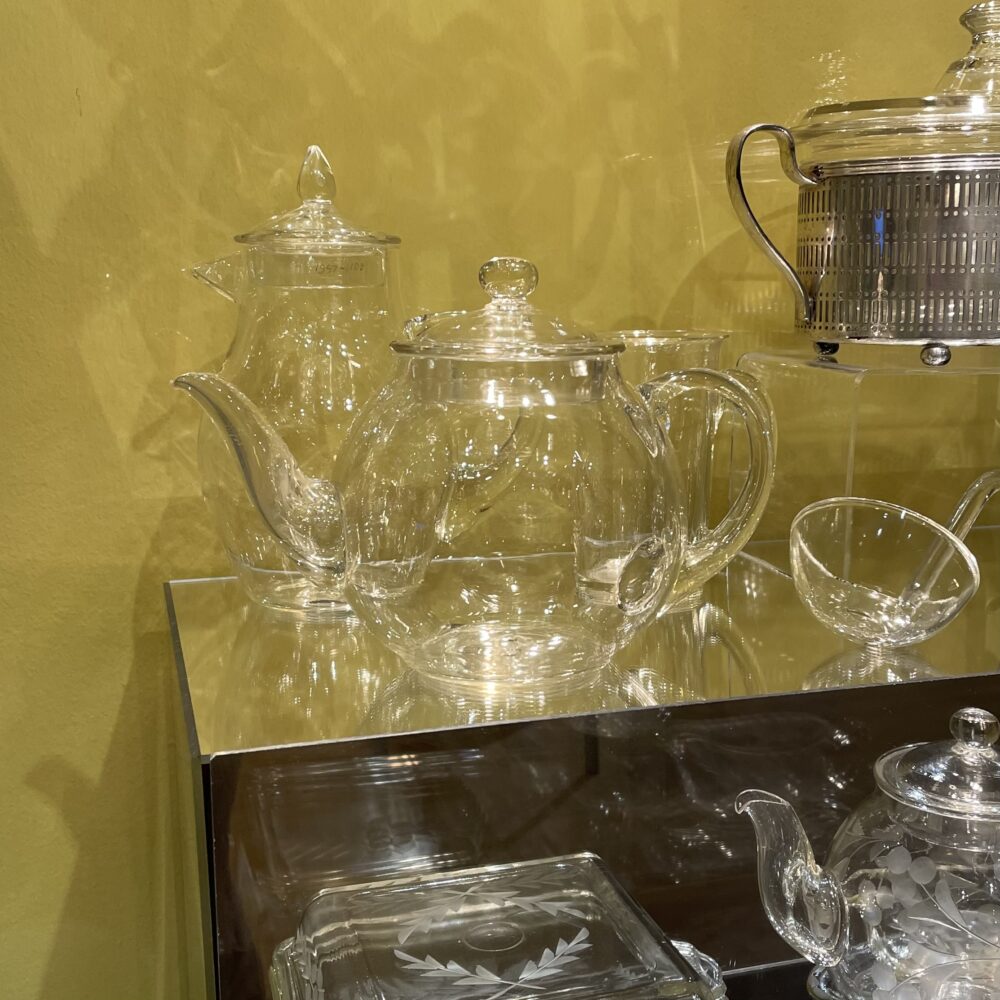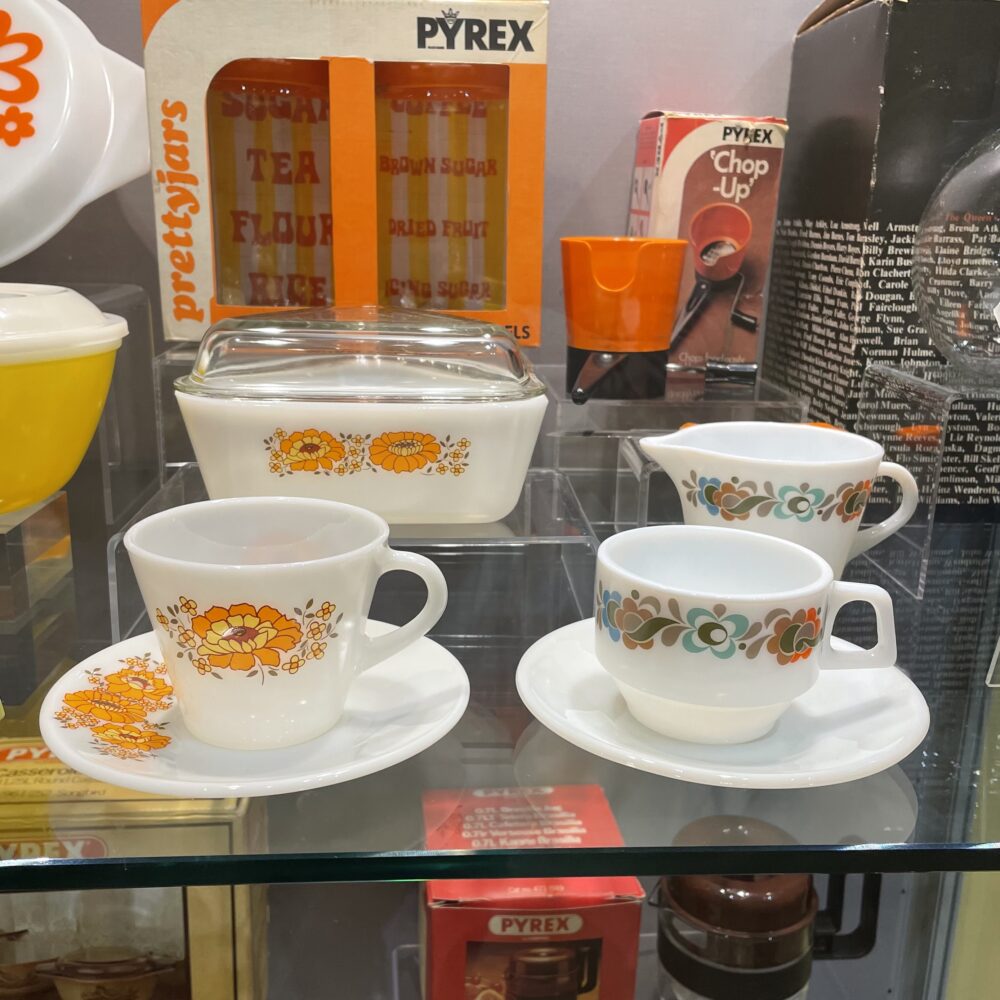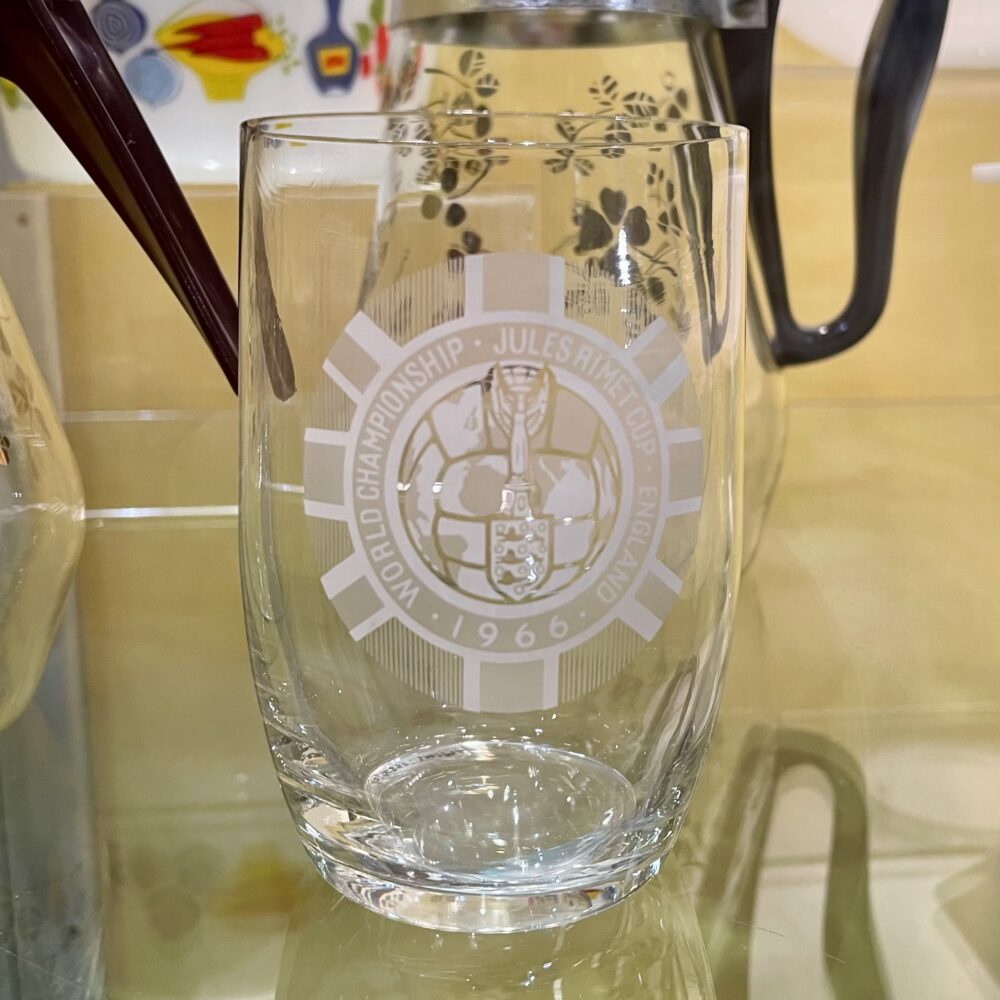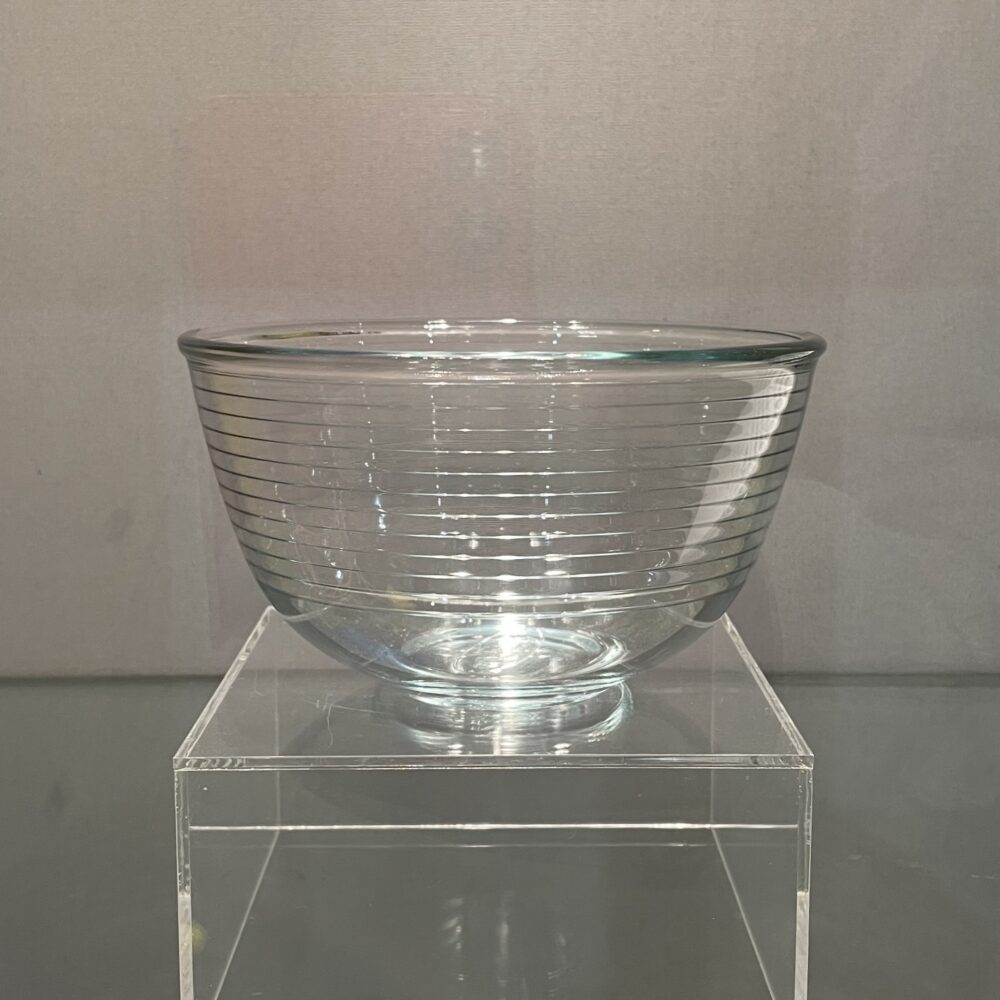I’ve been to visit ‘Pyrex100’
Pyrex, the thermally resistant glass, used to be made in Sunderland. In fact, between 1922 and 2007, all Pyrex sold across the commonwealth—excepting Canada—was made in Sunderland. You’ve probably got a bit of Sunderland in your home right now.
The city is proud of this heritage, and so Sunderland Museum has created Pyrex100—an exhibition to celebrate a century since the start of manufacture in the city.

When I think of Pyrex, I think of glass measuring jugs. I was therefore unsurprised to see that the earliest Pyrex manufactured in Sunderland was a range of clear glassware. I had no idea, though, that glass teapots were a thing in the 1920s and 1930s.
Around this time, Pyrex was also a pioneer in marketing products directly to householders—mostly housewives at that time—rather than to their household staff. It’s sometimes startling to be reminded of the pace of societal change over the last century.

Though the designs of these pieces look suspiciously familiar, I was also unaware of Opalware. These were products made of Pyrex, and therefore strong and heat-resistant, but designed to look like china. They don’t look like they’d fool anyone, but I’m not convinced that I’d immediately pick them out as glass.
The crockery we use in our house is made of reclaimed offcuts of glass products: I thought this was a really novel idea when we bought them, but clearly I’m 70 years behind the times.

Commemorative Pyrex was a thing, too: here’s a 1966 World Cup commemorative glass. I would perhaps have expected to see this sort of thing in crystal, but seeing it in Pyrex maybe illustrates that Pyrex was once desirable in a similar way.

And this is the last bit of Pyrex ever made in the UK, which rolled off the production line as the factory closed in 2007. As this was the last commercial glassware factory in Sunderland, this also brought to an end something like 1,500 years of glassmaking history in the city.
You might, like me, have assumed that the word Pyrex shares the Greek root pyr (fire) with pyrexia and, indeed, funeral pyre, given that its main property is heat resistance, and it is glass forged in a fire. But this exhibition made me wonder about the ‘ex’, and so I came home and looked it up.
And prepare to clutch your pearls because—amazingly—the brand has nothing to do with pyr and everything to do with pies.
The Oxford English Dictionary quotes the original company’s assistant secretary as saying:
The word ‘pyrex’ is a purely arbitrary word which was devised in 1915 as a trade-mark for products manufactured and sold by Corning Glass Works… We had a number of prior trade-marks ending in the letters ‘ex’. One of the first commercial products to be sold under the new mark was a pie plate and in the interests of euphonism the letter ‘r’ was inserted between ‘pie’ and ‘ex’ and the whole thing condensed to ‘pyrex’.
It just goes to show that you can never rely on etymological assumptions.
Pyrex100 continues at Sunderland Museum… but it ends on Saturday, so you need to get there quick if you want to see it.
This post was filed under: Art, Museums, Post-a-day 2023, Travel, Pyrex, Sunderland, Sunderland Museum.